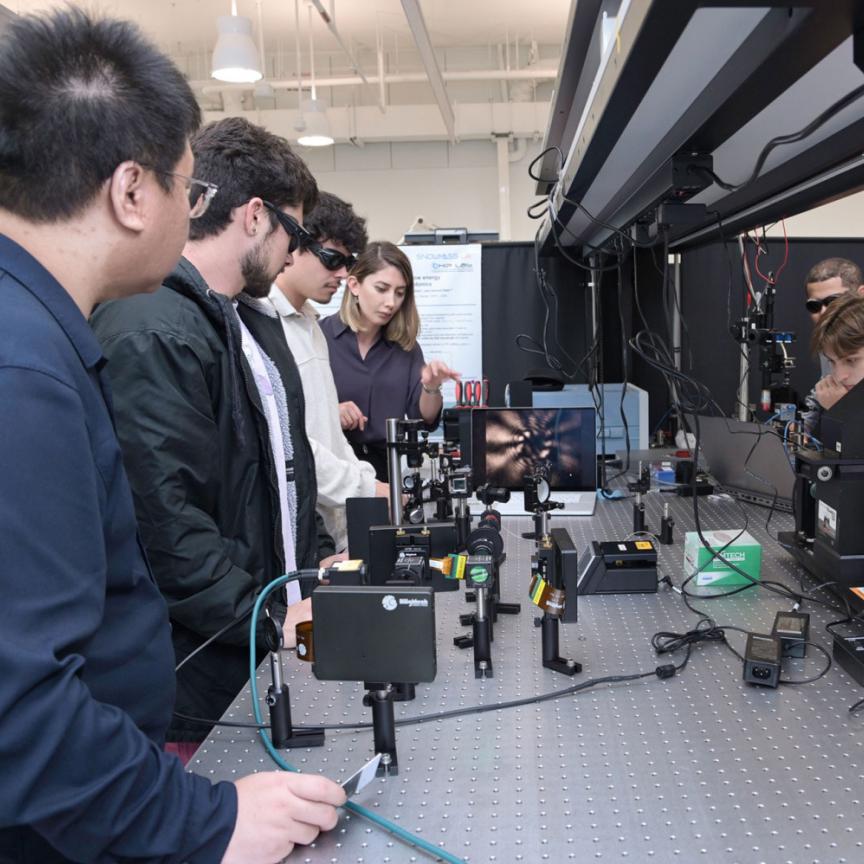Following AIM Photonics’ recent summer school, Dr Robert Geer, director of education and workforce development, details the importance of equipping industry with photonic integration expertise
Could you explain the purpose behind the AIM Photonics Summer Academy?
As a relatively new and emerging technology, the industry is lacking the highly skilled workforce that we need to bring integrated photonics into commercial production. Over the last six years, since AIM Photonics has been in existence, there used to be only a few places that would actually make these integrated photonic circuits. But now we have commercial foundries that will produce chips that have an integrated photonics flow, so there is greater need than ever before for people to understand how to do this.
And that’s what this Summer Academy is really doing. It’s introducing the concepts behind how you route light on a chip and then, using some of the industry’s most advanced electronic photonic design automation tools, you put your ideas into practice and actually design a photonic integrated chip.
What kind of people does the Summer Academy attract?
Our participants are not only university students and researchers, but we also get people from industry or government labs who are interested in understanding these optical integration tools and capabilities, as well.
From a technology perspective, it’s a bit of a mix. You have people that may come from the photonics side that work with moving signals across, for example, fibre optic networks, and they want to understand how they can more efficiently translate these signals into electronic systems. And then you have people with an electronic system background that are used to building integrated circuits for electronic chips who now need to build them with photonics.
How does the Summer Academy get designed?
It’s really meant to be a course about the breadth of what can be done in photonic integration. It’s taught through a series of lecture courses given by both academic and industry experts, followed by a sequence of hands-on exercises to teach participants to how to solve particular design issues – for example, how they would arrange circuit elements to get a signal out – and then implement those solutions using electronic photonic automated design software suites from companies such as Synopsis and Cadence that simulates exactly what the optical signals are going to look like.
The Summer Academy uses AIM Photonics’ process design kits [PDK], which basically allows designers and engineers to write out circuits that they understand, and then the PDK translates that to the process steps needed to build the structure.
This really democratises how you could design a chip, because you don’t need to know how the chip is built, you just need to know what your circuits need to do. You simulate what your circuits look like, optimise it through software, and then the PDK takes all that information, and provides it to the chipmaker, the foundry, which then translates it into process steps. So when the participants create a design for an optical device, they get to see how the design gets translated via the PDK to a layout on a chip.
Participants are broken out into groups to work on their design projects in a particular application area, such as datacom, RF signal processing, sensors, and LiDAR imaging applications. They then are able to continue that work, through online application interest study groups focused on current design standards and performance metrics for these applications.
How did you decide on what was going to be taught?
The Summer Academy is really driven by helping progress the technology in order to help small companies to innovate, or larger companies to get better performance. For this to happen, there has been a real need to get people familiar with the design process.
AIM Photonics provides a series of online courses that teach various aspects of integrated photonics, however the Summer Academy was put in place to address the need of more people wanting to learn in-person about photonic integration, and perhaps in a more concentrated fashion.
Over the years, we’ve worked with our partner institutes of higher education to identify the skills gaps in integrated photonics design and develop the appropriate curriculum to fill those gaps. Since we started our Summer Academy in 2018, MIT has organised and delivered the content, bringing together some of the country’s foremost experts from industry and academia.
Moving towards the workforce development aspects of your role. What are the goals and challenges?
For us, it’s pretty straightforward in terms of the goals: we want more people to be able to create integrated photonic systems to accelerate the technology into mainstream production. The biggest part of our focus is developing a broader workforce both to design photonic chips and also to package them.
While we’ve been working on the design front for many years now, and on the fabrication front through our wafer facilities, we need to continue to focus on building up the packaging expertise and training. There’s a lot of special sauce in packaging because each different application requires a different type of packaging approach.
How are you attracting more skilled people to this area?
We do a lot of outreach on the education front. One way of getting students interested is by providing chips that instructors can use in their courses. We have fabricated chips that are designed specifically for education purposes. We’re now at the stage of packaging them and developing the accompanying educational content. The next step is to more widely distribute them to university programmes in the US that focus on integrated photonic circuits.
We also find that when you’re working with smaller numbers of students, they’re getting much more exposure. So in order to start expanding out beyond just research universities, we recently held a boot camp for college students and community college students at Bridgewater State University, a small university in Massachusetts. And in October, we’re hosting a packaging workshop in the same way – bringing small groups of students into our packaging facility in Rochester, NY.
In a perfect world, what would you like to see happen to get more support for this technology area – and fill the workforce?
In the US, there has been a strong focus recently on the Chips Act, which is congressional legislation that aims to promote more domestic chip production, especially for advanced applications. The next generation of systems will incorporate photonics as well as electronics, and we want to make sure that people understand that if you want to innovate, this is the technology platform you want to use – where you have photonic systems co-packaged with your electronic systems to enable incredibly powerful capabilities.
We also know, given the troubling supply chain issues we’ve experienced over the last two years, that it’s to our advantage to not only continue to develop these technologies, but also be able to domestically manufacture them, as well.
So, in a perfect world, I would love to get messages like that out there. And of course, have the resources to be able to engage more people, whether they’re students, professionals – whoever needs the skills – in the mix.
Based in New York state in the USA, the American Institute for Manufacturing Integrated Photonics (AIM) offers start-ups, designers, developers and academic researchers access to a supporting infrastructure of services across the entire silicon photonics development cycle, including design, simulation, fabrication, packaging, validation and a path to volume-manufacturing. It is one of nine manufacturing innovation institutes (MIIs) established by the USA Department of Defence (DoD). The DoD MIIs bring new technologies to life with taxpayer dollars, combined with matching funds from academia, industry and state governments.


